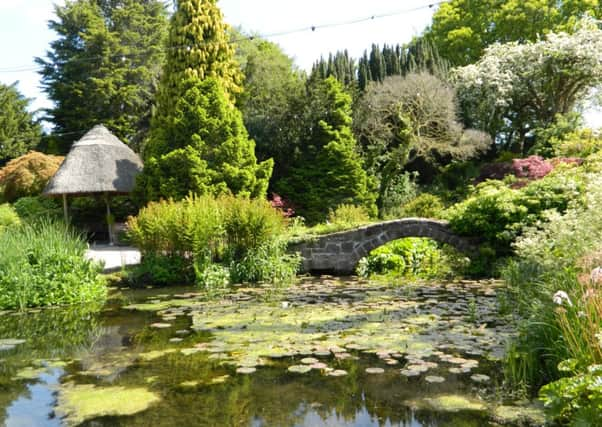The best of both worlds


Never go back, they say. Never go back to the scene of past glories, of happy memories, of gilded renown. It will only end in tears.
Andrew Flintoff’s trying it now. Heaving his failing body back to the crease after years spent fruitlessly trying to occupy his time with boxing, or cycling through South America, or being the butt of Jack Whitehall’s jokes.
Advertisement
Hide AdAdvertisement
Hide AdBilly Davies tried it at Nottingham Forest, the former PNE boss returning to the City Ground two years after being ignominiously sacked, only to be ignominiously sacked once more.
So it was that I took a slightly uneasy trip back to the Wirral, where I was born and brought up, and a place I still associate with the happy memories of my childhood.
The peninsula, sandwiched between Liverpool and North Wales, is hosting the Open Championship this summer, and tourism bosses are trying to position it as a destination for short breaks and romantic getaways.
On the evidence I saw, it should succeed.
Stay away from the Mersey-side, which has more urban attractions, and the Wirral reveals itself as a place of rolling fields, busy beaches and hidden villages.
Advertisement
Hide AdAdvertisement
Hide AdGastropubs are breeding like gastronomic rabbits, and it even boasts its own Michelin-star restaurant, Fraiche, in Oxton.
We stayed at the Jug and Bottle, a large gastropub in Heswall, one of the affluent commuter towns strung out along the west Wirral coast.
The room was spotlessly clean, with all the usual mod cons, and the en suite bathroom was large, complete with complementary toiletries.
Using it as a base to go exploring, we visited several of the must-see spots on the peninsula.
Advertisement
Hide AdAdvertisement
Hide AdNess Gardens, owned and run by the University of Liverpool, is a world-renowned botanic garden, filled with species brought back from the mountains of the Himalayas and China by the great plant hunters.
On a sunny day in late spring, the gardens look a picture, with the rhododendrons in full bloom against the dark of the pine wood, and the handkerchief tree offering its tissue-shaped blooms to any hayfever sufferers who happen to be passing.
Under its director, Kevin Reid, and new garden and collections manager, Nick Lightfoot – poached from the National Trust – the gardens are looking to expand what they can offer to visitors, especially in wet weather.
They have ambitious plans for mini-Eden Project style biodomes, and revamping the old potting sheds, to create wet weather attractions for the family.
Advertisement
Hide AdAdvertisement
Hide AdIn the meantime, you can enjoy the flowers, foliage and stunning views across the Dee to North Wales.
Down the coast, through the chocolate box village of Burton, is the RSPB’s reserve at Burton Mere. Created from farmland which had become uneconomic due to the encroaching waters of the Dee, the reserve is now a haven for all sorts of wetland birds.
If you are looking for peace and quiet, the reserve is the place to find it. Not as developed as the Wildfowl and Wetlands Trust’s Martin Mere, it is a place to unwind and get away from it all.
But then, as we discovered, there are places like this all down the peninsula’s coast.
Advertisement
Hide AdAdvertisement
Hide AdHidden away, off-the-beaten track places, like picturesque Eastham Village, where a ferry cross the Mersey used to ply its trade, or Parkgate, where packet ships took goods and passengers across to the Emerald Isle, and where you can find people flocking to its famous ice cream parlours.
But we found another hidden treasure, this one tucked away at the end of a narrow lane which leads down to the coast from the main road between Chester and West Kirby.
You have to park your car at the country park –where the railway line used to run the length of the peninsula – then take a track down some wooden steps, through shady undergrowth, before the trees open out on to an expanse of beach.
Turn right, and you’ll see a small, whitewashed cottage, glinting in the sun.
Advertisement
Hide AdAdvertisement
Hide AdThis is Shore Cottage, and in the garden is a small, bespoke studio with floor-to-ceiling windows looking out across the river to Wales.
Here, Laura Heath, her husband Kris and her mother Sue Barnes run two-day art courses inspired by the beautiful setting. The cottage has been Sue and Laura’s family home since 1982, and the studio still has a homely feel.
Welcomed with homemade cakes, you can take courses in photography, textiles, laser cutting, and fused glass, creating mementoes of your Wirral holiday.
Whether warmed by the sun, or lashed by the coastal winds and rain, you can’t fail to be inspired.
Advertisement
Hide AdAdvertisement
Hide AdThe seaside is a major influence on the work the family creates, and it’s one of the things that marks the Wirral out as different.
As we found, it really does have the best of both worlds – the traditional family seaside resort at West Kirby or New Brighton, where the amazing 19th century Fort Perch Rock looms over the mini-golf and arcades – to the countryside inland, with miles of footpaths and bridleways to explore.
So, was it a mistake to go back to my childhood stomping ground? No – more like many happy returns.
for more details on any of the places mentioned, or for more ideas on what to do in wirral, visit these websites
www.shorecottagestudio.com
www.nessgardens.org.uk
www.visitwirral.com
www.rspb.org.uk/reserves
www.the-jugandbottle.co.uk